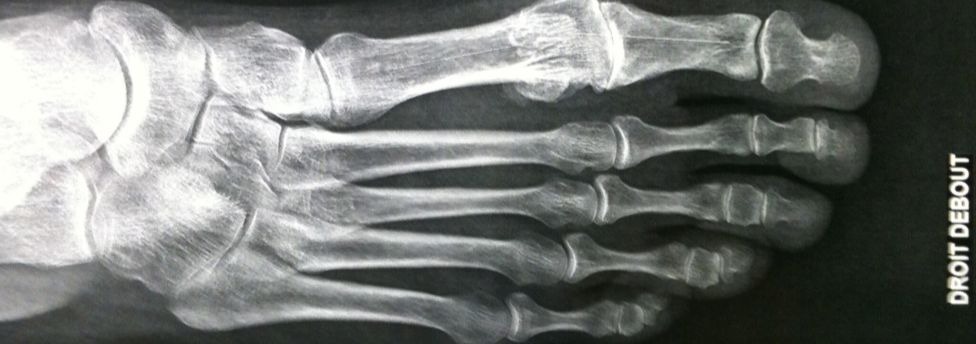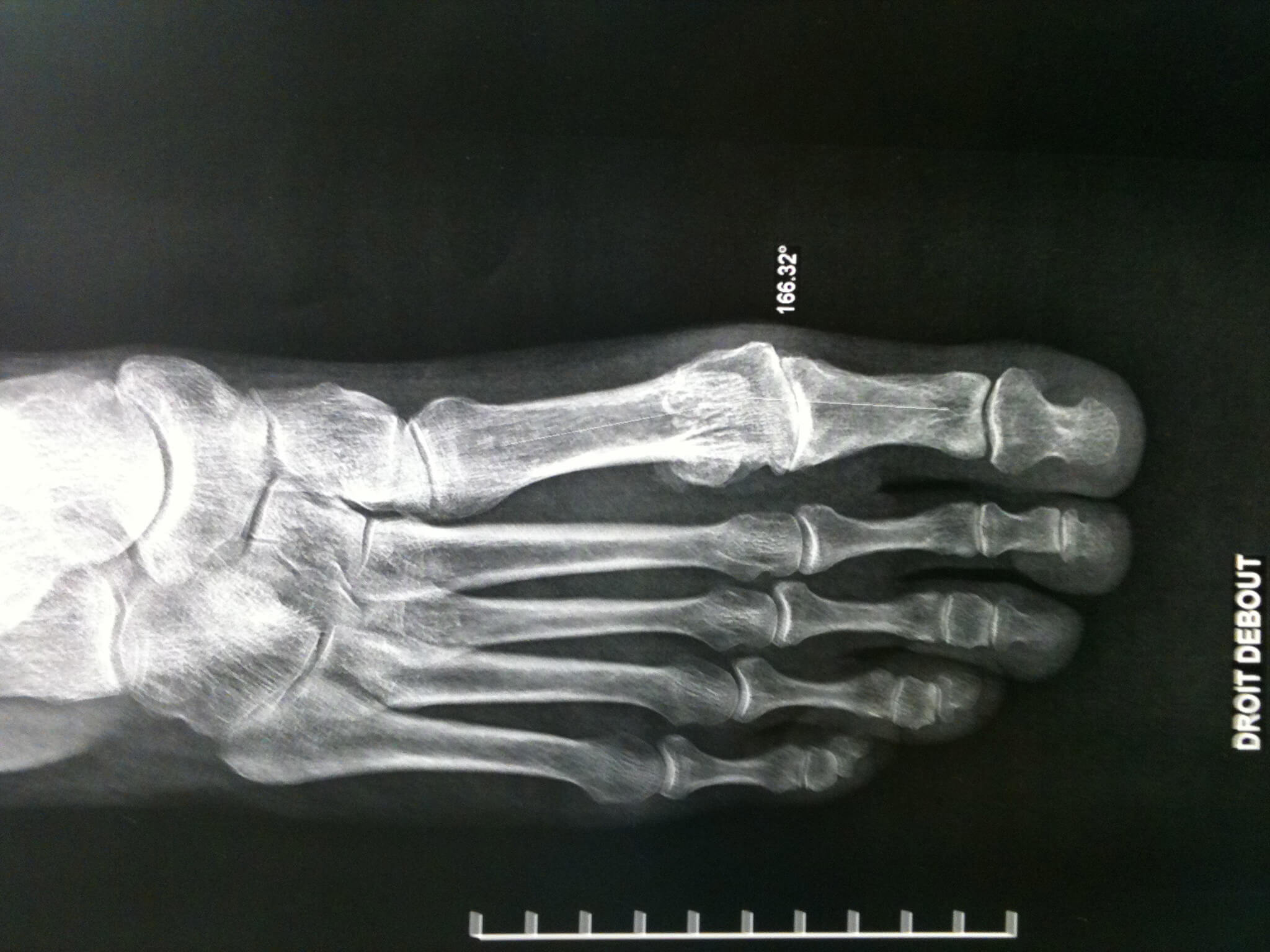Pain in the big toe can be a sign of gout, injury or hallux rigidus.
Hallux Rigidus Painful Big Toe
Hallux rigidus is the latin term for arthritis of the metatarsophalangeal joint of the big toe (the ball of the big toe). Strictly speaking, hallux rigidus translates “Stiff big toe”. Just like any joint, the end of the bone surfaces are covered in shock-absorbing cartilage much like the gristle at the end of a chicken drumstick. In arthritis, the cartilage wears away and bone rubs against bone, which causes pain. The big toe joint is a particularly complicated joint because there are two pea-shaped bones sitting under the big toe called the sesamoid bones which are also involved in motion.
The joint is stiff usually because there is scarring of the lining of the joint (capsule). This is coupled with extra bony spurs that form around the joint and also loss of the shock-absorbing lining of the joint (articular cartilage).
Hallux Rigidus Arthritis Of The Big Toe
Bone spurs are the body’s response to an unhappy or unstable joint. Just like we may put stabilisers onto a child’s bicycle to stabilise them, bone spurs are the body’s way of preventing further damage to the joint. The child with a slower bicycle may be upset because they have been slowed down. Likewise, we as adults with a stiff big toe are equally unhappy, usually because it’s painful and stiff.
Why is Hallux Rigidus painful?
There are several reasons for the pain associated with Hallux Rigidus. It might be that the soft tissue lining of the joint (the synovium) is inflamed. Or it might be that areas of bone are rubbing or impinging on other areas of bone, or indeed a combination of these reasons.
Who gets this condition?
Hallux rigidus can affect all individuals, but is more likely to affect those who are active and regularly participate in sporting activities. Or those with inflammatory conditions such as gout. It is well known that hallux rigidus may begin early in life, even in the teens.
What causes Hallux Rigidus?
The reasons are unknown but probably relate to the huge stresses that go across this joint. A bit like a car jack lifting up a car, your big toe lifts up your entire body weight day and day out. In most people, a definite cause is never found. Probably the main reason why this joint is particularly susceptible to wearing out is that it is under tremendous stress when walking or running. With each step, a force equal to several times your body weight passes through this very small joint. It is a bit like a car jack, having to lift up your body weight day in and day out.
In a few people the wear and tear process may begin following injury or another medical problem such as gout or an infection in the joint. There are a lot of theories about why the joint becomes arthritic. But as yet none of them seem very helpful in treatment or prevention of the condition.
What symptoms does it cause?
Pain and stiffness are the predominant symptoms. Patients may feel a lumpy feeling on the top or side of the big toe, which is caused by bone spurs under the skin. Bone spurs are the body’s response to arthritis. They form as a way of stiffening the joint to protect it from further harm. The best way to think of them is much like stabilisers placed onto a child’s bicycle.
Pain is often increased when walking or running. This is caused by excess upward movement of a joint that has arthritis and the bones rubbing on the bones. Females that wear high heels often find this uncomfortable. This is because when the toe is extended (as it is when wearing a high heel) the sesamoid joints are put under more pressure.
What is the natural history of hallux rigidus?
Fortunately, the chances are that your toe will not get progressively worse. But as with any arthritis the symptoms can fluctuate from being mild to moderate to severe on different days. You are unlikely to be at any greater risk of developing arthritis of other joints (such as hip or knee arthritis) than anyone else. Unless, of course, you have a genetic predisposition to arthritis, which can affect some families.
Is there anything I can do to stop it getting worse?
Looking after yourself, eating healthily and maintaining your optimum weight are key objectives in the management of arthritis. You should make sure you wear comfortable well-fitting shoes that fit your feet. To avoid the big toe joints from wearing away further you should avoid activities that stress this joint.
When is it time to consider surgery for Hallux Rigidus?
As with any arthritic condition, you should only really consider intervention when you are getting more bad days than good days and your quality of life is affected.
This article was written by the London Ankle & Arthritis Centre, a specialist centre in the prevention and treatment of musculoskeletal injury. Please contact +44(0) 207 042 1828 if you would like to see someone for a specialist opinion.
Did you enjoy this article? Please let us know in the comments below! You may also like; How to find London’s best ankle surgeon
Click here for more information on Orthopaedic Care.


